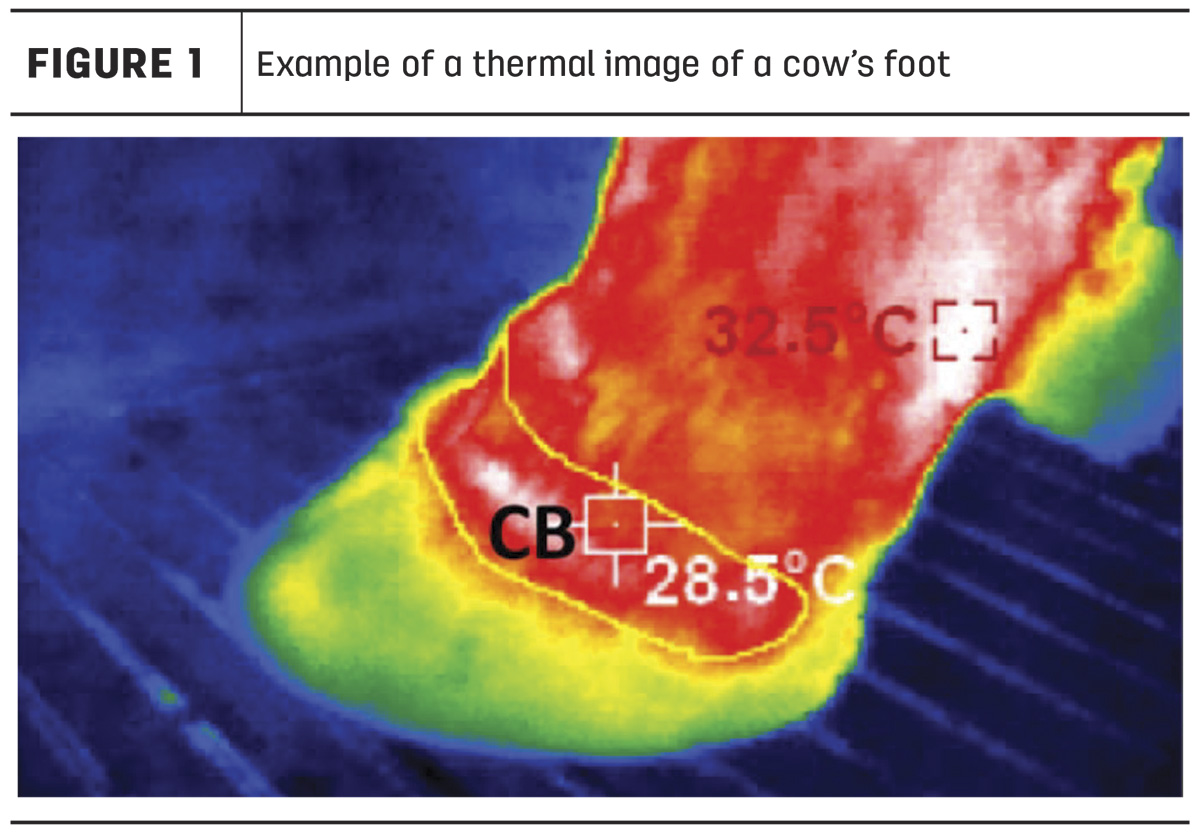Summer is quickly approaching. Are you ready for the heat? Are your cows ready for the heat?
As we know, heat stress has a multitude of negative effects on cattle well-being. Our ability to detect heat stress, as well as other ailments, early is essential for a positive prognosis for our cattle.
Researchers have been using thermal imaging to evaluate changes in cattle surface temperatures to detect a variety of health ailments, including heat stress. However, there are many things to consider when implementing thermography technologies on a farm. Knowing which area of the body best corresponds to the ailment you want to detect can be difficult, especially when evaluating heat stress. This may surprise you, but some studies recommend eye temperature as the most accurate area of the body to monitor for heat stress.
Let’s take a few minutes to explore what we currently know about thermography and cattle heat stress and where the field of science is headed in the future. Below are summaries of 10 studies that tested how we can use thermography on dairies to detect heat stress.
Eye and rectal temperatures
Eye temperatures from thermal images and rectal temperatures in 113 calves were positively correlated, indicating that thermal imaging of eyes could help producers identify calves with a fever.
Heat stress identified by eye temperature
Forty cows exposed to mild to severe heat stress conditions displayed increased respiration rates and core body temperatures, as expected. Eye temperatures recorded with thermal imaging showed that left eye temperature readings had better repeatability than right eye readings. The lacrimal sac part of the eye was most closely correlated with respiration rates and core body temperatures.
Forehead temperature associated with temperature humidity index
Thermal images of different body parts on 24 Jersey heifers were compared against rectal temperatures and the temperature humidity index. Forehead temperatures, as measured by thermography, were most closely associated with changes in rectal temperatures and the temperature humidity index than any other part of the body.
Lateral udder temperature associated with rectal temperature
Another study compared physiological measurements of heat stress against thermal images of lactating cow body parts. This study found that the temperature of the lateral region of the udder was most closely associated with the cow’s rectal temperature.
Environmental impacts on infrared thermography
It is important to note that environmental factors such as wind speed, ambient temperature, and humidity impact the accuracy of infrared thermography images. Engineers created a calibration method that accounted for these factors and resulted in a mere 0.04°C difference between infrared thermal temperatures and rectal temperatures in cattle. When considering how thermography technologies may be implemented on farms, calibrations such as the one explored in this study will be needed to improve accuracy.
Coat color and thermal imaging
A study in Brazil compared rectal and body surface temperatures between red-and-white and black-and-white Holstein cows. The red-and-white cows had lower body surface temperatures on the white spots and lower rectal temperatures than black-and-white cows during hot weather. This study reminds us how coat color influences an animal’s exposure to heat stress conditions.
Thermography and respiration rates
As we already know, cattle experiencing heat stress increase their respiration rates. According to a study conducted in New Zealand, thermal imaging can be used to monitor respiration rates in cattle. Thermography was able to detect the difference in an inhale versus an exhale in cattle. That is pretty impressive!
Detection of mastitis
Although not related to the detection of heat stress, one study analyzed udder surface temperatures for 105 cows using thermal imaging. Healthy quarters were 90.3 – 90.7°F and quarters with intramammary infections were 91.8 – 92.7°F. This is just one example of how thermography can play a role in the detection of other relevant cattle ailments, besides heat stress. In the future, designing an automated method of thermography to monitor cows for ailments would be a game changer.
Heat detection in five Zebu cattle breeds
Infrared thermal images were collected from different body areas of five Zebu breeds of cattle. The eye and brain regions were most affected by changes in environmental conditions. These results align well with data collected from other breeds of cattle.
Prediction of heat stress
Researchers attempted to use infrared thermal images collected in the morning to predict heat stress in feedlot cattle. They compared calf panting scores with thermographic data but could not find a relationship between data collected in the morning and whether the calf experienced heat stress later in the day.
As you can see from this spread of articles, using thermography to detect heat stress in cattle shows promise. This area of research is gaining more attention, including the use of thermal images to detect disease. For example, several researchers identified methods to use thermography to detect hoof ailments in cattle (Figure 1). In fact, my former graduate student conducted a study during the summer of 2020 that aimed to use thermal imaging to detect the onset of digital dermatitis. The intent was to identify cows developing digital dermatitis sooner so we could provide treatment sooner and, ultimately, improve the animal’s prognosis. We found that foot temperature increased by 73% from 16 days prior to diagnosis to the day of diagnosis. This information could lead to the development of technologies that may be able to monitor individual cow feet temperatures and alert the dairy manager when a cow is deemed suspicious.

The advancement of technologies on dairies are intended to make our lives easier, not more complicated. Thermography technologies are becoming available on the market for dairies. Just as with any investment, determine how you will use the data provided by the technology prior to making the purchase. Data can be your friend, but it can quickly become overwhelming and an enemy, if you are unprepared.
References omitted but are available upon request. Click here to email an editor.









